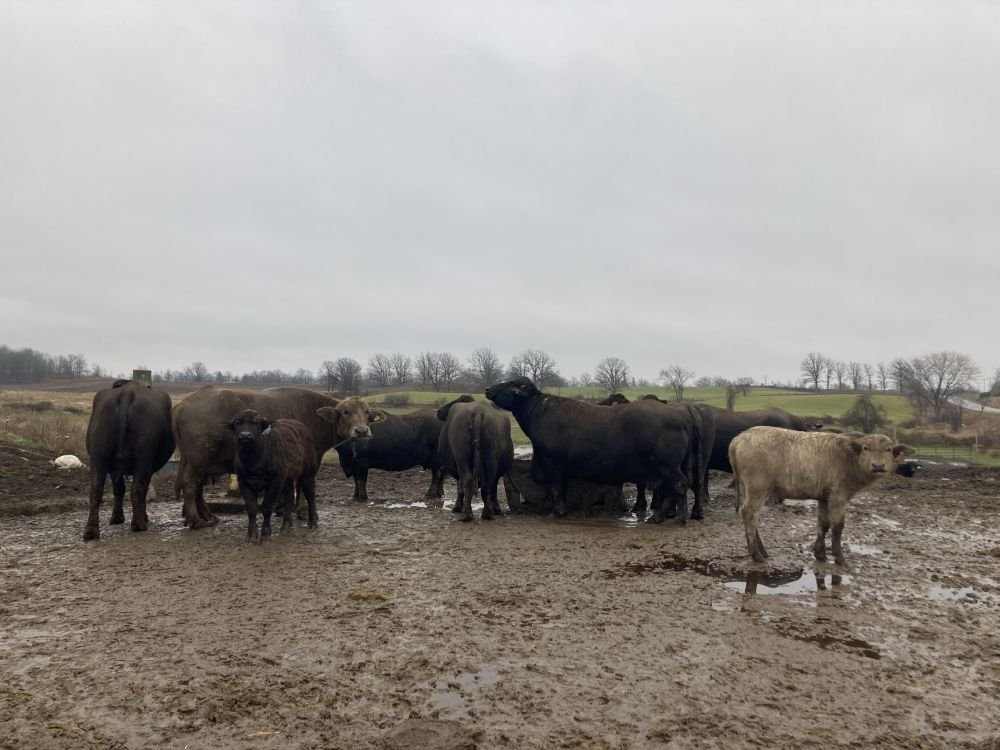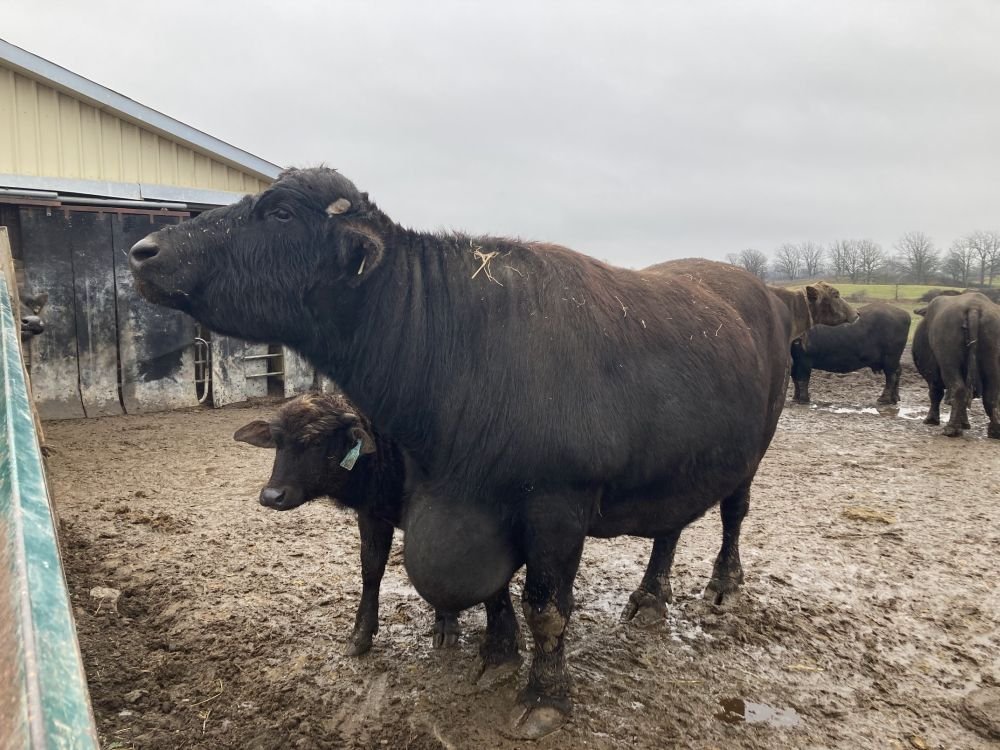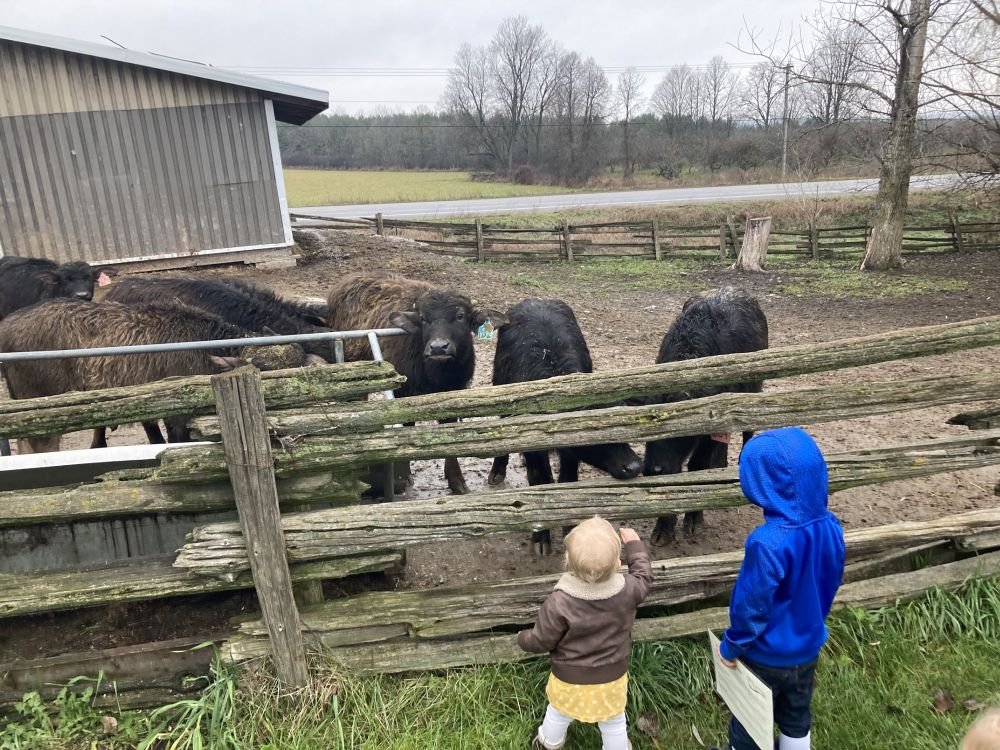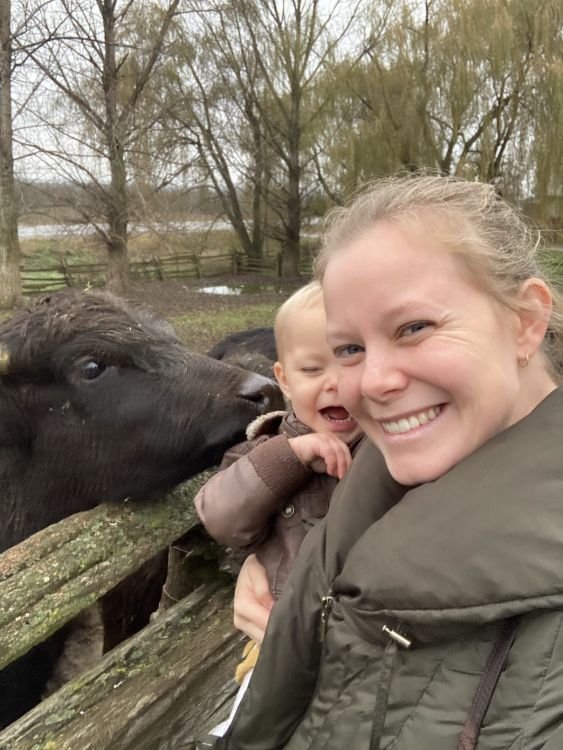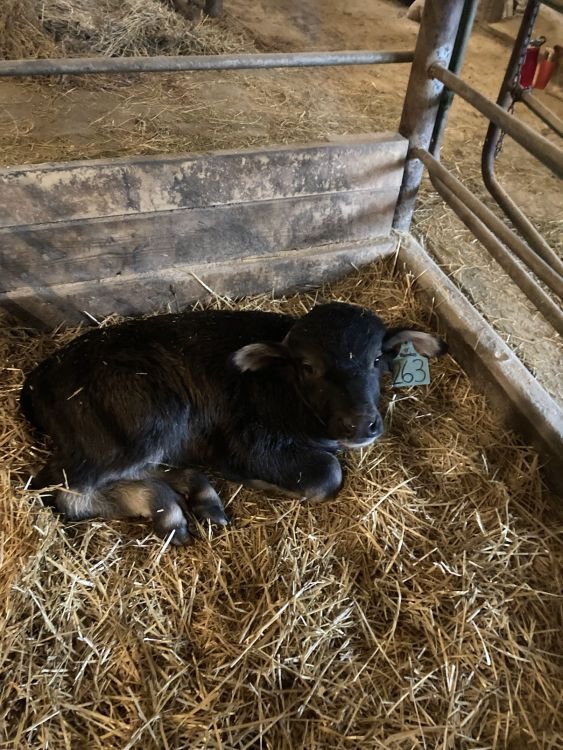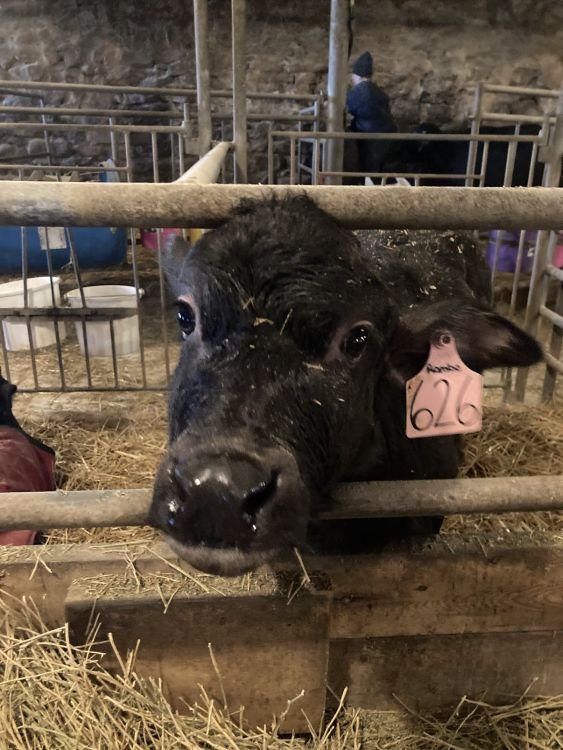Meeting Water Buffalo at a Dairy Farm
Photo by Avery Schu
Hey there, Creation Explorer!
Have you ever met a bovine before? You probably have—this created kind is huge! American bison, cattle (cows), musk ox, yaks, and more all belong within the subfamily Bovinae and the bovine kind, created by God on day six of creation week—along with the other land creatures. Well, we recently went out and explored God’s creation to meet another member of the bovine kind: the water buffalo!
When we met American Bison at Big Bone Lick State Park in Northern Kentucky, we were behind a big fence because even domesticated bison are still wild animals. You can’t get too close to them. I thought water buffalo would be the same—but, boy, was I wrong!
I was driving with Winston, Felicity, and Lois, and we saw a water buffalo farm that had a little store that sold water buffalo cheese, gelato (like ice cream), soap, and more (would you try water buffalo milk ice cream? We might go back this summer and give it a try!). They also offered self-guided tours of the farm—yes, please!
We met full-grown water buffalo that are milked twice a day, each one giving between 8-10 liters (8.4–10.5 quarts) of milk every day! This milk is very fatty, with a fat content of 7-12% (cow’s milk usually has about 3.5% fat content. The fat is the creamy stuff that makes butter and other products. Yum!). Since they are milked twice a day and bottle-fed as calves, these buffalo were so friendly. They crowded around the fence as soon as they saw us coming so we could pet and scratch them.
After meeting the mamas, we met the “teenagers” (calves around a year old), the smaller calves, and the newborn calves in the barn. They were adorable! Weighing in at around 80 pounds at birth, they aren’t tiny, but they looked little compared to their massive 1,500-pound mothers!
Like the ones we met, Asian water buffalo are native to Asia, with 110 million of the world’s 172 million buffalos living in India. They’re called “water buffalo” because, well, you can probably guess—they love water. They spend hours a day cooling off in the muddy waters, which provides protection from the hot sun and pesky biting insects. Their wide, splayed hooves keep them from sinking in the mud, allowing them to happily wallow on riverbanks all day.
While drinking water buffalo milk might seem strange to us in North America, it’s very normal in certain places, such as South Asia. To them, water buffalos are what cows are to us, providing milk, meat, leather, transportation, and even help with plowing and harvesting in the fields.
It’s amazing to see the diversity within a kind—from shaggy American bison to smooth water buffalo. That diversity is only possible because God created animals to reproduce according to their kinds. He gave each original kind the genetic diversity to produce features such as long or short hair, different sizes, colors, and more. This allows animals to survive in an ever-changing world and highlights God’s wisdom and power as Creator.
Well, we’re off on another adventure. Until next time remember how God has provided creatures, such as the water buffalo, to help meet our physical needs here on earth. As Matthew 6:31–32 says, “Therefore do not be anxious, saying, ‘What shall we eat?’ or ‘What shall we drink?’ or ‘What shall we wear?’ For the Gentiles seek after all these things, and your heavenly Father knows that you need them all.”
P.S. We’d love to hear from you! Ask your parents to help you contact us at schusoff@answers.tv with any comments or questions you’d like to share.
- © 2024 Answers in Genesis
- Privacy Policy
- Contact
- About

